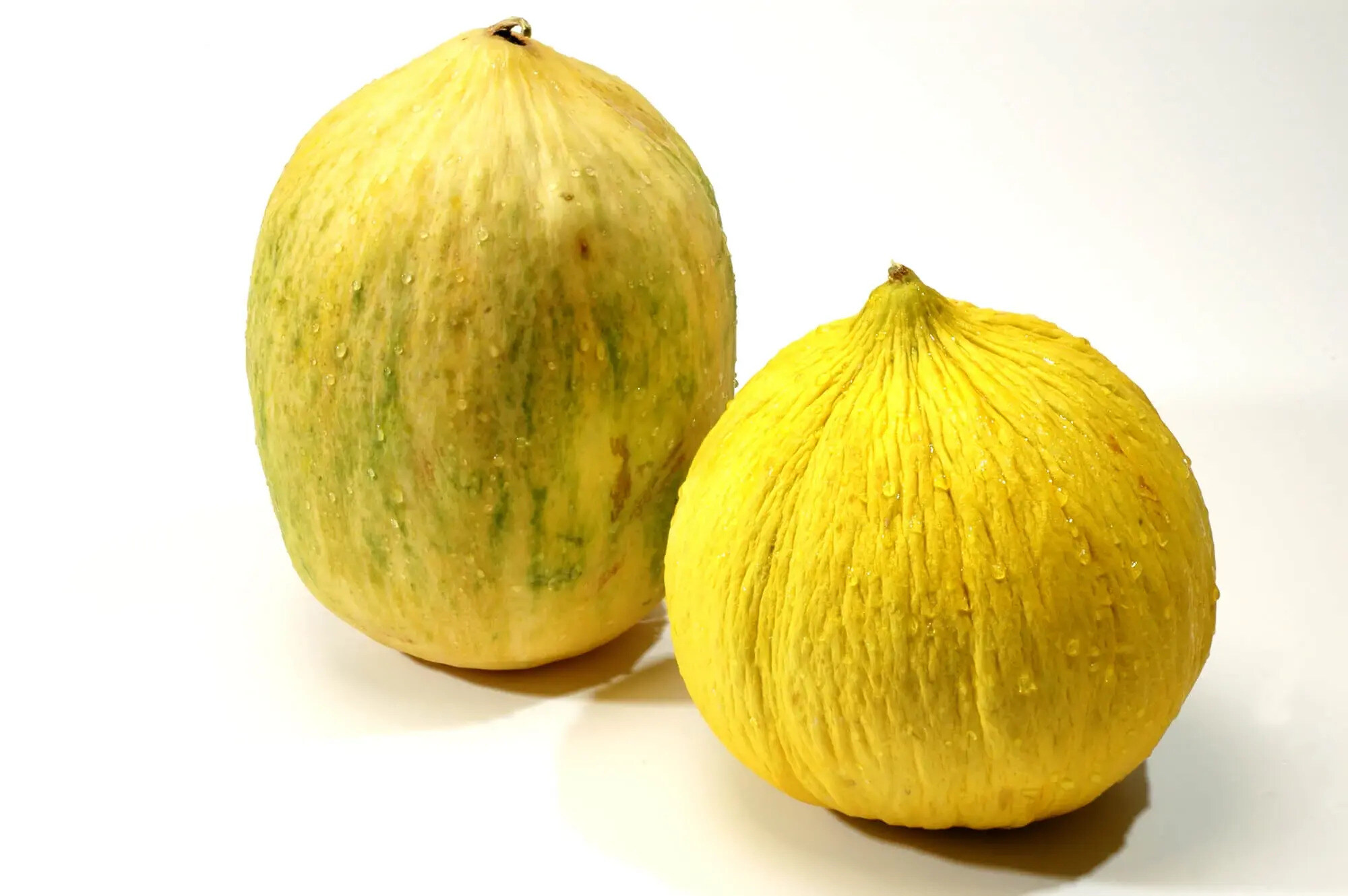
What is a Crenshaw melon? A Crenshaw melon is a hybrid fruit, a cross between a Casaba and a Persian melon. Known for its sweet, juicy flesh, this melon has a unique flavor that combines the best of both parent melons. Its thick, yellow-green rind protects the tender, peach-colored interior, making it a favorite for summer snacks and desserts. Crenshaw melons are not only delicious but also packed with vitamins A and C, offering a healthy treat. Whether enjoyed fresh, in salads, or blended into smoothies, Crenshaw melons bring a burst of tropical sweetness to any dish.
What is a Crenshaw Melon?
Crenshaw melons are a unique type of melon known for their sweet, juicy flavor and distinct appearance. They are a hybrid between the Casaba and Persian melons, offering a delightful taste experience.
- Crenshaw melons are typically oval-shaped with a slightly wrinkled, yellow-green rind.
- The flesh of a Crenshaw melon is a vibrant orange-pink, similar to cantaloupe but with a smoother texture.
- These melons are known for their sweet, spicy flavor, making them a favorite in fruit salads and desserts.
- Crenshaw melons are usually harvested in late summer to early fall, making them a seasonal treat.
- They can weigh anywhere from 8 to 10 pounds, making them one of the larger varieties of melons.
Nutritional Benefits of Crenshaw Melons
Crenshaw melons are not just delicious; they are also packed with nutrients that can benefit your health in various ways.
- A single serving of Crenshaw melon provides a significant amount of vitamin C, which is essential for a healthy immune system.
- They are also a good source of vitamin A, which is important for eye health.
- Crenshaw melons contain dietary fiber, aiding in digestion and promoting a healthy gut.
- These melons are low in calories, making them a great option for those looking to maintain or lose weight.
- They also contain potassium, which helps regulate blood pressure and supports heart health.
Growing Crenshaw Melons
Interested in growing your own Crenshaw melons? Here are some facts about their cultivation.
- Crenshaw melons thrive in warm, sunny climates and require well-drained soil.
- They need a long growing season, typically around 110 days from planting to harvest.
- These melons are usually planted in late spring, once the danger of frost has passed.
- Regular watering is crucial, especially during the fruiting stage, to ensure juicy, flavorful melons.
- Crenshaw melons are susceptible to pests like aphids and cucumber beetles, so regular monitoring is essential.
Culinary Uses of Crenshaw Melons
Crenshaw melons can be used in a variety of culinary applications, adding a sweet and refreshing touch to many dishes.
- They are often enjoyed fresh, either on their own or in fruit salads.
- Crenshaw melons can be blended into smoothies for a refreshing, nutritious drink.
- Their sweet flavor pairs well with savory ingredients, making them a great addition to salads with cheese and nuts.
- They can be used to make sorbets and ice creams, offering a natural sweetness.
- Crenshaw melons can also be grilled, enhancing their natural sugars and adding a smoky flavor.
Fun Facts About Crenshaw Melons
Here are some interesting tidbits about Crenshaw melons that you might not know.
- The Crenshaw melon is sometimes referred to as the "Cadillac of melons" due to its superior flavor.
- They were first developed in the United States in the early 20th century.
- Crenshaw melons are often confused with other melons like cantaloupe and honeydew, but their unique flavor sets them apart.
- They are named after the Crenshaw family, who were early cultivators of this melon variety.
- Crenshaw melons have a relatively short shelf life, so they are best enjoyed soon after purchase.
How to Select and Store Crenshaw Melons
Choosing the right Crenshaw melon and storing it properly can make all the difference in taste and texture.
- Look for melons that are heavy for their size, indicating they are full of juice.
- The rind should be slightly soft to the touch but not mushy.
- A sweet aroma is a good indicator of ripeness.
- Store uncut Crenshaw melons at room temperature until they are fully ripe.
- Once cut, they should be stored in the refrigerator and consumed within a few days.
Health Benefits of Eating Crenshaw Melons
Eating Crenshaw melons can offer several health benefits beyond their nutritional content.
- The high water content in Crenshaw melons helps keep you hydrated, especially during hot summer months.
- Their antioxidants can help reduce inflammation and protect against certain diseases.
Sweet and Juicy Facts
Crenshaw melons, a delightful blend of Persian and Casaba melons, offer a unique taste experience. With their sweet, juicy flesh and distinctive aroma, they’re a summer favorite. These melons are not just tasty but also packed with vitamins A and C, making them a healthy choice.
Growing Crenshaw melons requires warm temperatures and well-drained soil. They thrive in sunny spots and need regular watering. Harvesting them at the right time ensures the best flavor.
In the kitchen, Crenshaw melons are versatile. Enjoy them fresh, in fruit salads, or as a refreshing addition to smoothies. Their sweet flavor pairs well with savory dishes too.
Whether you're a gardener or a foodie, Crenshaw melons are worth exploring. Their unique taste and nutritional benefits make them a standout in the melon family.
Was this page helpful?
Our commitment to delivering trustworthy and engaging content is at the heart of what we do. Each fact on our site is contributed by real users like you, bringing a wealth of diverse insights and information. To ensure the highest standards of accuracy and reliability, our dedicated editors meticulously review each submission. This process guarantees that the facts we share are not only fascinating but also credible. Trust in our commitment to quality and authenticity as you explore and learn with us.
